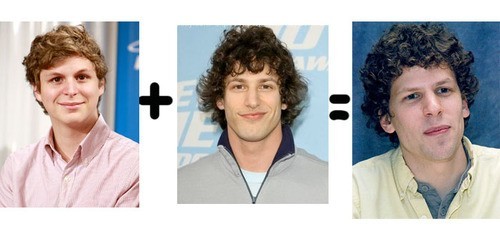 Good characters make the difference between memorable stories and forgettable ones. If you're like me, you spend hours poring over character sheets, writing journals and scenes, and collecting details to enrich your characters. Character development is an essential part of plotting.
Good characters make the difference between memorable stories and forgettable ones. If you're like me, you spend hours poring over character sheets, writing journals and scenes, and collecting details to enrich your characters. Character development is an essential part of plotting.
But what about when the first draft is finished?
Like all facets of novel-writing, character development doesn't have clean borders. The process does not stop and start at any given time. I'd be willing to bet J.K. Rowling is still finding out new things about Harry Potter nearly ten years after the last book was penned.
Don't be scared to edit your characters after you've finished your first draft. In fact, you must do this. Because no matter how carefully you plan them, a good character can still surprise you. In editing, your job is to find those surprises, and react to them.
The first thing I look for when editing characters is places where they have deviated from the character sheets I created during the plotting phase. Sometimes this will be something minute like the color of their eyes, other times it will be something gigantic, like their backstory, or an emotional reaction you would not have predicted from the character sheet.
Typically, whatever has "accidentally" flowed out onto the page is preferable, but not always. Sometimes you'll write your character acting one way, only to remember that you had a very good reason for planning him another way.
Typically, whatever has "accidentally" flowed out onto the page is preferable, but not always. Sometimes you'll write your character acting one way, only to remember that you had a very good reason for planning him another way.
For example, I might write a scene where my exorcist priest character hears the confession of a colleague. It might have been the natural thing for him to do in the course of the story. But I might look back and recall that my exorcist priest is supposed to have lost his faith, which gives him a character arc to go through. Depending on the timing of the scene, I might want the exorcist to refuse to help his colleague because he's still battling with his lack of faith.
If you're writing a series of books, you might plan certain character flaws that enable the character to remain interesting or active in your sequels, but in the haphazard process of drafting, you might inadvertently cause the character to overcome those flaws, leaving them with no internal demons in the sequels. In that case, you're probably better off revising your current book such that the demons remain.
Spontaneity is one of the joys of writing, but don't necessarily change your character sheets because it seems like less work. Sometimes it's better to revise the draft back to your original plan. Most of the time, however, the organic development that comes from drafting can produce great results. Whatever you do, make sure to balance what's in your draft against what's in your plotting notes, and choose the direction that results in a better story.
Another important thing I do when editing characters is take a step back and see if there are too many. In my post on character roles, I outlined Dramatica's model of the story jobs available to characters. While the model has some flexibility, it's true that it is seldom a good idea to have two characters fulfilling the same role. Even if you're set up with one character for each job, you might still have too many character arcs cluttering up your novel's emotional space. When I finish a novel, one of the first things I look for is the opportunity to combine characters.
Say you have a love interest character in a detective story. She's a typical damsel in distress; you've developed her well, and you like her, but she's not exactly jumping off the page. Then say you have a minor antagonist or a contagonist (see this post for more on what a contagonist is) in the form of a nosy cop. What if the girl was the cop? What if the damsel-n-distress routine was just a ruse to get in the detective's good graces?
Changing characters' motivations and roles can be a tricky business, and it can result in a heavy workload. That's why I recommend doing it in the developmental stage, when you'll be making the biggest changes. Think hard about the possibilities, and be willing to put in the extra work. More than any other element, your characters are your story. It's worth a few extra days at the keys to make them the best they can be.










No comments:
Post a Comment